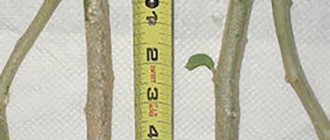The plant's name, dorotheanthus, is Latin for "Dorothea's flower." He was named so in honor of Dorothea, who was the mother of the botanist G. Schwantes. Some species of this plant are popularly called “crystal chamomile.” The fact is that the surface of the foliage and shoots of this plant is covered with small hairs, the structure of which is glandular. Thanks to this, they sparkle effectively and shimmer in the sun, as if they were made of crystal.
Also popularly, dorotheanthus is often called “midday”. The thing is that the flowers of this plant fully open only at midday under the bright rays of the sun. And in the afternoon hours they begin to gradually close. On a cloudy day, when the bushes do not have enough light, the flowers most often do not open at all.
This flower comes from the arid part of South Africa. That is why it is recommended to cultivate it in those regions where there is little rain, warmth and many fine days. Please note that in excessively cold climates the plant may die.
Features of dorotheanthus
The perennial plant dorotheanthus is a succulent and part of the Aidaaceae family. In mid-latitude gardens it is grown as an annual, but in indoor cultivation it is cultivated as a perennial. This genus includes about two dozen different species.
The fibrous root system is buried 20–25 centimeters into the soil. The height of the bush can vary from 5 to 30 centimeters. Its creeping stems are quite fleshy. The foliage and stems are dark green or emerald. Shoots placed very close to each other form a dense carpet, intertwining with each other. Sessile leaf plates are oval in shape, their thickness is from 20 to 30 millimeters. After watering or rain, the thickness of the leaves may increase as moisture accumulates in them.
Externally, dorotheanthus flowers look like daisies or daisies. They can be painted in various shades, for example: yellow, white, red and many others. From one bag of seeds, bushes grow, the flowers of which can be painted in a variety of colors (more than 12 shades). The lifespan of one flower is 2 days. After it fades, a new bud appears in its place. Large flowers reach approximately 50 mm in diameter. The duration of flowering is influenced by both the type and variety of the plant, and the climate in the region where it grows. As a rule, flowering begins in mid-July and ends in October or November. In rainy and cool summers, flowering will be sparse.
Landing
- Seeds can be planted in containers in mid-March
. - We prepare mainly sandy soil
. Permissible temperature is 15–18 degrees. - The flower seeds are small enough that they do not need to be buried deep into the soil, just scatter them on top of it
. To do this, first loosen the soil. - After 12-18 days you can see the first shoots. It emerges unevenly; some shoots may hatch within a week, while others may emerge much later. The main thing is not to overdo it with watering, otherwise the shoots can quickly rot.
- At first, plants develop and grow slowly, but later you can be convinced of their dynamism. For hardening, seedlings are taken out into the fresh air
; it is better to place them where it is warm and sunny. The favorable temperature is several units lower, 10–15 degrees. - After 1.5 months, you can plant
the plants in separate small containers. It is worth noting that after picking, plants take root worse, so it is better to plant as little as possible right away. - We plant in the ground when the weather has completely settled and frosts are not expected.
We maintain a distance between flowers of 10-20 centimeters. - A month later we enjoy the beauty of the new regulars in your flowerbed.
Growing dorotheanthus from seeds
After the dorotheanthus flowers fade, translucent boxes with round-shaped seeds form in their place. The seeds of this succulent are very small: one gram contains about 3 thousand. They remain viable for a couple of years. If desired, seeds can be sown directly in open ground, and dorotheanthus can also be grown through seedlings.
Growing through seedlings
Sowing of seedlings is carried out in the last days of March or in the first days of April. In this case, when the time comes to transplant the seedlings into open ground, they will already be blooming. It is recommended to use large rectangular boxes for sowing seeds. The soil mixture should be loose and light, and it can be mixed with sand and peat.
Level the surface of the substrate and distribute the seeds evenly over it. There is no need to bury them in the soil mixture or sprinkle them on top. Moisten the crops with a spray bottle and cover the top of the box with film or glass. The first seedlings should appear after 10–12 days.
During the first 20 days of growth, crops should be kept at room temperature. Then the seedlings are hardened off. To do this, they are transferred to a cooler place with an air temperature of about 18 degrees, and then gradually reduce it to 10 degrees. When 3–3.5 weeks have passed since the seedlings appeared, it is recommended to plant them in individual peat pots.
You should water the bushes very carefully so that droplets of water do not fall on the foliage or shoots. In the last days of May, seedlings are planted in the garden, but there is no need to remove them from the pots. Please note that the distance between the bushes should be at least 20 centimeters.
DOROTHEANTHUS or CRYSTAL CHAMOMILE!!! we sow for seedlings.
Sowing seeds in the ground
If you do not want to grow dorotheanthus through seedlings, then the seeds can be sown directly into the garden. This is done in the last days of April or in May. However, it should be taken into account that such bushes will bloom much later than those grown through seedlings.
A suitable place for sowing should be well lit by the sun. The soil needs to be loose and well permeable to air and water. To improve the structure, sand can be added to the soil. Dorotheanthus also grows well on loam. Soil fertility is not particularly important.
Since the seed material is very fine, it is recommended to mix it with a small amount of sand before sowing. The seeds are buried 10–20 millimeters into the soil, while the row spacing should be from 15 to 20 centimeters. Almost immediately after the seedlings appear, start weeding them, and you need to remove absolutely all weeds, even small ones. At the same time, thin out the seedlings; maintain a distance of 30–40 mm between them. After some time, the young plants are thinned out again, this time a distance of 70 to 80 mm is left between them. After the bushes have grown and become stronger, they can be planted in a permanent place; in this case, the distance between them should be 15–20 centimeters.
Secrets of success
The main requirement of Dorotheanthus for soil is air and water permeability. They feel most comfortable in sandy and sandy loam soils. These plants also need to be given a well-lit area. In partial shade you may not expect abundant flowering.
Dorotheanthus do not need large doses of water. Water the bushes only in case of prolonged drought, in the morning, making sure to loosen the soil after the procedure.
If you place small pebbles under the stems and leaves, the likelihood of the above-ground parts rotting from contact with wet soil is significantly reduced.
Dorotheanthus can be fed two to three times per season with a weak solution of fertilizers for flowering plants.
During flowering, wilted flowers should be immediately cut off to stimulate the early appearance of new buds. With the arrival of autumn, during temporary cold spells, it is recommended to cover the planting with non-woven material. When it warms up, it is removed, and the plant continues to bloom.
Caring for dorotheanthus
Fertilizer
The low-maintenance dorotheanthus is quite easy to grow in your own garden. There is no need to feed it. The fact is that in its homeland in Africa, where prolonged drought is not uncommon, the plant’s root system obtains the necessary nutrients on its own.
Temperature
This culture is distinguished by its heat-loving nature. Even slight frosts can destroy it. The flower feels best at temperatures from 15 to 25 degrees.
Watering
It is necessary to moisten the soil moderately, and it is better to do this in the morning. In this case, at noon, when the sun is most active, the flower will not overheat. Also, evening watering can lead to stagnation of liquid in the roots of the plant. Even if the bushes are drooping after a hot day, they should be watered only in the morning. Only seedlings recently planted in open ground need systematic watering.
Features of care
In order for the dorotheanthus to grow and develop well, it should be provided with optimal conditions and systematic good care:
- For planting, you should choose a sunny area that should warm up well;
- water moderately, making sure that the liquid does not stagnate in the root system (can withstand short-term drought);
- the soil should be light, air- and water-permeable;
- If there is a threat of frost, the bushes should be covered.
Also some tips from experienced gardeners:
- In order to ensure that a sufficient amount of oxygen reaches the roots and that rot does not appear on them, the surface of the soil around the bushes should be systematically loosened.
- In order for the bush to bloom long and luxuriantly, it needs to be pruned from time to time.
- Dorotheanthus grows well at home, and it can also be cultivated as a hanging plant.
Gardener mistakes
Beginning gardeners often make mistakes when feeding grapes in the fall:
- Only young seedlings are fed, ignoring mature bushes.
- Only complex fertilizers are applied.
- The added nutrients are not dosed, often overestimating their quantity.
In fact, young seedlings are not fed in the fall for the first two years, since their vines still produce little fruit, which means they have not yet had time to deplete the soil. And adults, bearing at least 10 kg of fruit from one bush, quickly absorb all the nutrients from the ground.
Complex preparations often contain nitrogen, which is not recommended to be given to the crop in the fall. Therefore, you need to make a choice in favor of complex preparations containing magnesium, calcium, sulfur and zinc.
Excessive amounts of nutrients will only destroy the plant, and insufficient amounts will not bring any benefit.
Growing at home
Dorotheanthus is suitable for growing both in open ground and at home. It is not recommended to pick seedlings grown for planting in open ground. Those seedlings that have been picked can be cultivated at home. Indoor dorotheanthus should try to create the same conditions that are ideal for growing this flower in the garden.
If you decide to decorate your balcony or loggia with this spectacular succulent, then choose a sunny place for it. The best option would be a balcony located on the south side. When grown at home in winter, dorotheanthus also needs a lot of light. If the plant does not have enough light, then it will not die, but it will not please you with its flowering.
Reproduction
Propagation by cuttings. Root cuttings from March to May. If you provide additional illumination with fluorescent lamps, you will be able to root the plant in the fall. Cut 10-centimeter cuttings at an angle, dry them slightly and plant them in pots with calcined sand. Place the pots in a well-lit room with a temperature of +10°C and do not water for the first week, and then simply keep the sand slightly moist. When the cuttings take root, plant 3 rooted cuttings in wide, shallow pots: first pour a thick layer of expanded clay onto the bottom and then soil. Place pots with cuttings on southern windows, ensure a moderate temperature in the room.
Propagation by seeds. Dorotheanthus seeds ripen by autumn in round seed pods. Wait for the end of flowering, collect the boxes, immerse them in water for an hour, and when they are wet, open and collect the seeds. Wash and dry the seeds. Sow the seeds in a container at the end of March - beginning of April, while the soil should be light, loose, contain peat and sand in a ratio of 1: 1: 2.
Dorotheanthus seeds are very small: they do not need to be buried, just scatter them over the soil with pre-calcined river sand. After sowing, lightly moisten the seeds, cover with a transparent film, maintain the temperature +15...+18°C. The first shoots will appear in a week, the rest - in 3-4 weeks. When all the seeds have sprouted, move the container to a well-lit place. Water moderately to prevent the seedlings from getting sick. The temperature should be within +10°C. After 1.5 months, plant the dorotheanthus shoots in separate pots: the distance between the shoots in the pot is 10-20 cm. In another month, the dorotheanthus will bloom.
Types and varieties of dorotheanthus with photos
Dorotheanthus bellidiformis
The recumbent stems of this species are decorated with narrow, fleshy leaf blades. Flowers can be colored red, orange, pink or yellow.
The best varieties:
- Gelato Dark Pink . The flowers are painted in 2 colors: the inner petals are white, and the outer ones are cyclamen-colored.
- Magic Carpet Mick s. The flowers have a double color, and the shades can be very different.
- Pastel mixture . This variety is very popular among gardeners. Its flowers can be pale pink, purple, white or yellow. The bushes grown from these seeds will delight you with lush, bright blooms, and your garden will be decorated with a colorful, spectacular carpet. The bushes are low-growing, so it is enough to maintain a distance of 10 centimeters between them.
- Merry round dance . The bushes of this variety reach a height of about 0.3 m. The flowers have a spectacular color: their middle is dark purple, and the petals, almost white at the base, gradually turn into a rich color towards the tips.
- Yellow . The petals of the flowers of this variety are painted bright yellow, while their centers are red.
Dorotheanthus oculatus
This species is quite rarely found in gardens of mid-latitudes. The heavily branching bushes are decorated with foliage, the length of which is approximately 4.5 cm and the width is 1 cm. The center of the flowers is always painted in a rich shade, and their petals can be pink, white or red.
Dorotheanthus gramineus
The bush consists of highly branching red and pale pink stems, and it reaches a height of about 10 centimeters. The elongated leaf blades are sessile. The flowers reach from 30 to 35 mm in diameter, their centers are pale red, and the petals can be colored salmon, red or pink.
There are varieties whose flowers remain open even in the shade and late in the evening:
- Lunette - the center of the flowers is brownish-red, and the petals are rich yellow;
- Lemonade - petals have a gradient color, with orange and lemon shades predominating;
- Northern Lights - flower petals are yellowish-green;
- Apricot pointe shoes - petals are painted in one color;
- Magic Carpet - pink flowers have a white stripe around the center.
Dorotheanthus apetalus
This species is dwarf and does not have lush foliage. It is extremely rarely cultivated by gardeners.
"Crystal Grass"
Each specimen of crystal grass is valuable, since the spectrum of flower colors is unusually wide, and each flower is unique in its own way. One day in June, I noticed scattered on the ground, as it seemed to me, candies in bright candy wrappers sparkling in the sun. In bewilderment, she headed towards them, and when she approached, she froze in amazement. The “crystal grass” was blooming...
She shone, sparkled, shimmering with crystal-radiant shades of the entire purest heavenly spectrum of the rainbow. Above the flowers, some tiny striped “bees” froze motionless in the air. I immediately remembered Nastenka from a fairy tale and her exclamation: “So that’s what you are, a scarlet flower!”
My “seven-colored cosmatics” were scarlet, raspberry-purple, orange-red, lilac, white, yellow and variegated with all sorts of shades and combinations of these colors. From above, the brightest flower petals seemed to be covered with the thinnest mother-of-pearl film, increasing the effect of radiance.
Among the flowering specimens, I counted twelve different colors. How did I not notice this lovely plant in flower catalogs before? Probably because photography is not able to convey the play of “crystal grass” with light. Or maybe dorotheanthus has some shortcomings that will appear later, and therefore is not popular among gardeners?
Descriptions of mesembryanthemum (doroteanthus) are found even in old books on floriculture. Have they really forgotten about him? Today, alpine slides, Japanese gardens, hanging baskets and container arrangements for terraces and balconies, where an amazing flower would be very useful, are in fashion.
Dorotheanthus in landscape design
The dorotheanthus plant looks great in rocky gardens and rock gardens. It is often sown to create a green carpet.
This flower can be grown both in the garden and in containers or pots, and in this case it is recommended to plant 3 or 4 bushes at once in one container. Dorotheanthus looks great when planted alone in the garden; it can also be planted together with other garden crops, which have already faded by mid-summer. Due to the fact that the flowers of such a plant can be painted in different colors, you can, if desired, create an ornament in the garden or make bright accents in the right places.
It should be noted that this plant has one big drawback - its seeds are very difficult to find even in specialized stores.
DOROTHEANTHUS. REVIEW OF FLOWERING PLANT.











